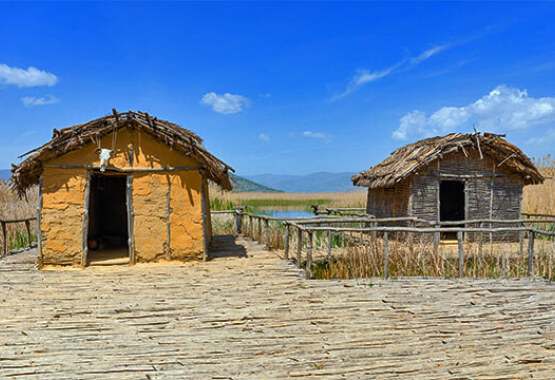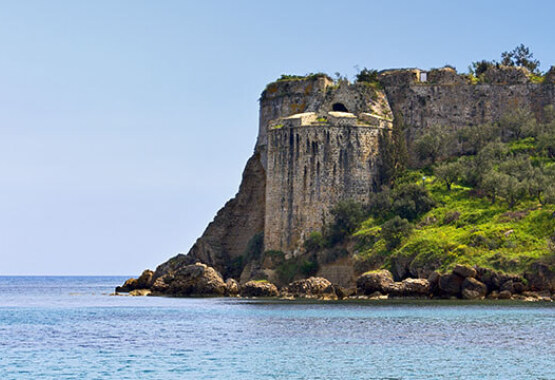
MILOS
Catacombs of Milos
The Catacombs of Milos are considered to be the most important early Christian monument of worship and burial site in all of Greece. In their original form there were three major independent underground galleries (A, B, C) cut into the porous volcanic rock. Today, they form a single cluster connecting between the galleries with more recent openings made in the 20th century. The complex fills a rectangular burial chamber in the form of the cubicula of the Catacombs of Rome.
Each gallery has a different width which varies from 1 to 5 meters and different heights ranging from 1.60 to 2.50 meters. The walls of the galleries, are carved arches, known as arcosolia, into which graves were built, while a large number of tombs lie on the floor in all the galleries but have been filled in today for the safety of visitors.
Some of the arcosolia have colored decoration but little is preserved today. However, still partially visible to the visitors, are the inscriptions on the walls which are important for the information they provide on Christian names, doctrines of ancient clergy and faith of the first Christians in angel-guardians of graves.
The current main entrance to the Catacombs was opened at the beginning of the century and today visitors enter the monument from Gallery B. On the right side of this gallery, there is the only remaining two-storey tomb and fragments of the most important inscription, that of the "Elders”.




